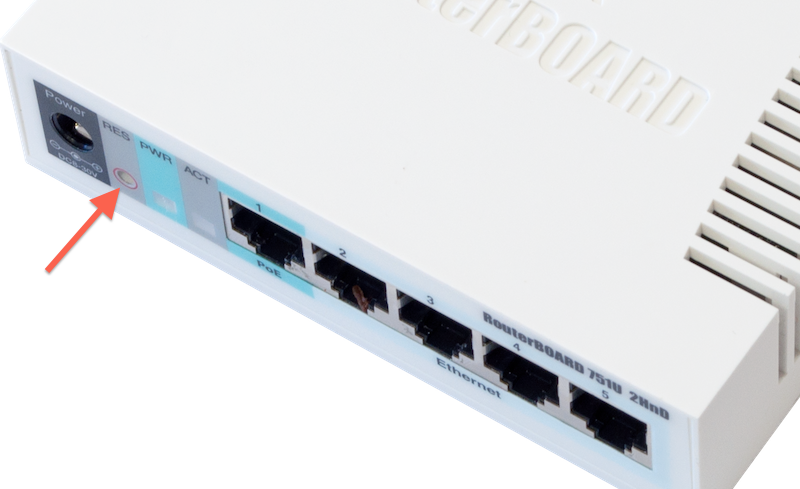Manual:Etherboot
Introduction
Etherboot mode is a special state for a MikroTik device that allows you to reinstall your device using Netinstall. There are several ways to put your device into Etherboot mode depending on your device you are using.
Reset button
The Reset can be found on all MikroTik devices, this button can be used to put the device into Etherboot mode. You can read about all possible modes that the Reset button can put your device into by reading the Reset button manual page. An easy way to put a device into Etherboot mode using the Reset button is by powering off the device, hold the Reset button, power on the device while holding the Reset button and keep holding it until the device shows up in your Netinstall window.
Note: Some devices (for example, RB1100 series) don't have the reset button easily accessible, for these devices the reset button is located inside the device's enclosure and requires you to remove the device's cover.
Warning: If you have set up Protected bootloader, then the reset button's behaviour is changed. Make sure you remember the settings you used to set up the Protected bootloader, otherwise you will not be able to use Eterboot mode and will not be able to reset your device.
RouterOS
If your device is able to boot up and you are able to login, then you can easily put the device into Etherboot mode. To do so, just connect to your device and execute the following command:
/system routerboard settings set boot-device=try-ethernet-once-then-nand
After that either reboot the device or do a power cycle on the device. Next time the device will boot up, then it will first try going in to Etherboot mode. Note that after the first boot up, the device will not try going into Etherboot mode and will boot directly of NAND or of the storage type the device is using.
Serial console
Some devices come with a serial console that can be used to put the device into Etherboot mode. To do so, make sure you configure your computer's serial console. The required parameters for all MikroTik devices (except for RouterBOARD 230 series) are as following:
115200bit/s, 8 data bits, 1 stop bit, no parity, flow control=none by default.
For RouterBOARD 230 series devices the parameters are as following:
9600bit/s, 8 data bits, 1 stop bit, no parity, hardware (RTS/CTS) flow control by default.
Make sure you are using a proper null modem cable, you can find the proper pinout here. When the device is booting up, keep pressing CTRL+E on your keyboard until the device shows that it is trying bootp protocol:
RouterBOOT booter 6.42.3
CRS125-24G-1S
CPU frequency: 600 MHz
Memory speed: 175 MHz
Memory size: 128 MiB
NAND size: 128 MiB
Press any key within 2 seconds to enter setup
Ethernet link absent...
trying bootp protocol.....................
At this point your device is in Etherboot mode, now the device should show up in your Netinstall window.
Jumper pin/hole reset
Some devices have a special jumper pin/hole reset function. You can read more about Jumper hole and Jumper pin, though not all devices have such a feature.
